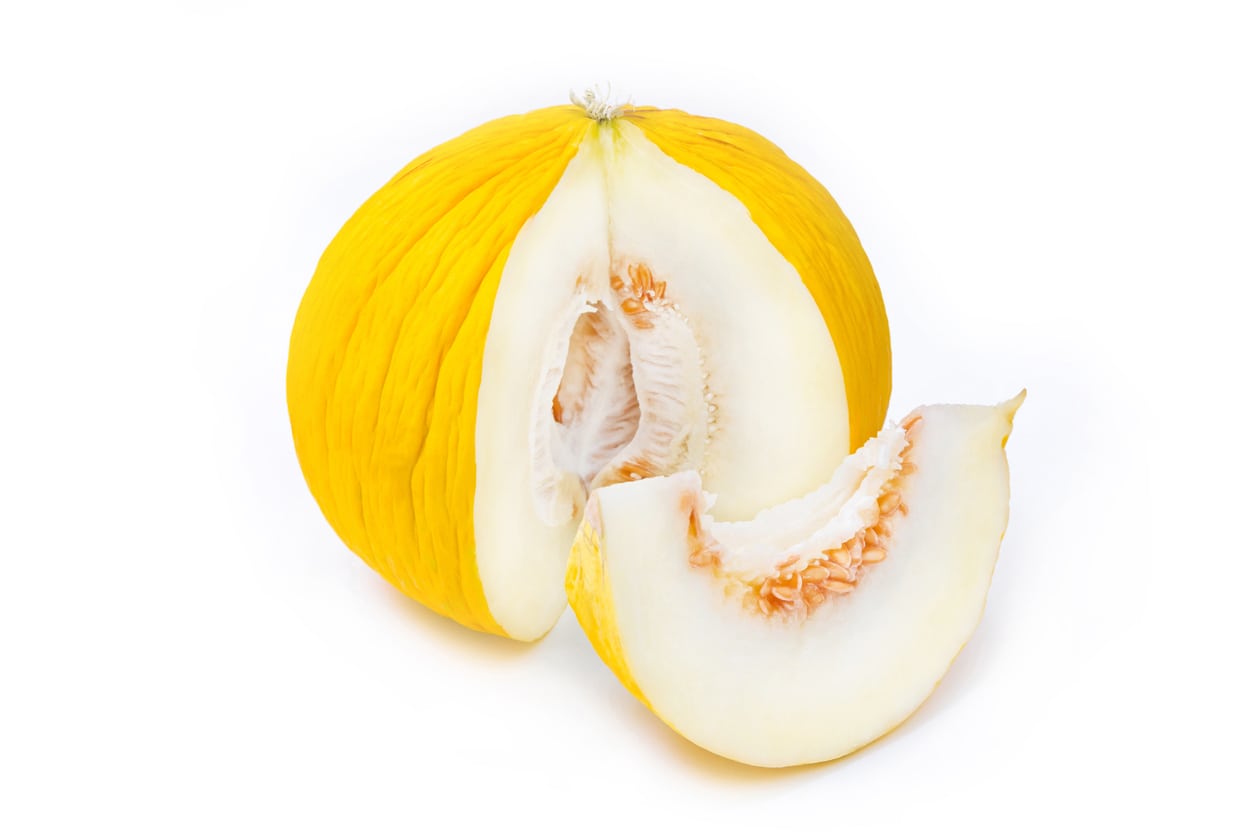What Is A Casaba Melon – How To Grow Casaba Melons


Casaba melon (Cucumis melo var inodorus) is a tasty melon related to honeydew and cantaloupe but with a flavor that is not as sweet. It is still sweet enough to eat, but has a slight spiciness. Successfully growing a casaba melon vine in the home garden requires a little knowledge about care and harvesting but is generally easy and similar to growing other melons.
What is a Casaba Melon?
Like other melons, casaba belongs to the species known as Cucumis melo. There are varietal subdivisions of C. melo, and casaba and honeydew both belong to the winter melon group. Casaba melons are neither smooth like honeydew, nor netted like cantaloupe. The skin is rough and deeply ridged. There are several varieties of casaba, but a common one grown and seen in supermarkets in the U.S. is ‘Golden Beauty.’ This varietal is green, turning to bright yellow when ripe, with a pointed stem end that gives it an acorn shape. It has a white flesh and a thick, tough rind that makes it a good choice of melon for winter storage.
How to Grow Casaba Melons
Casaba melon care is much like that for other melon types. It grows on a vine and thrives in warm weather. Dry, hot climates are best for growing casaba, as the leaves are susceptible to disease triggered by wet, warm conditions. It can still be grown in humid regions and in climates with cold winters, but precautions need to be taken against cold temperatures and wet conditions. You can sow seeds directly outdoors once soil is up to 65 degrees F. (18 C.) or start them indoors to get a head start on a shorter growing season. Thin out plants in beds, or place transplants, so that they are spaced 18 inches (45 cm.) apart. Make sure the soil is light and drains well. Regular watering for casaba melon is important, but so is avoiding wet conditions as well. Black plastic mulch is useful, as it keeps moisture in the soil and protects the plant from rot and disease. Casaba harvesting is a little different from other melons. They don’t slip when ripe, meaning they do not detach from the vine. To harvest, you need to cut the stem when they are close to maturity. The melons can then be stored and when the blossom end is soft, it is ready to eat.
Sign up for the Gardening Know How newsletter today and receive a free copy of our e-book "How to Grow Delicious Tomatoes".

Mary Ellen Ellis has been gardening for over 20 years. With degrees in Chemistry and Biology, Mary Ellen's specialties are flowers, native plants, and herbs.